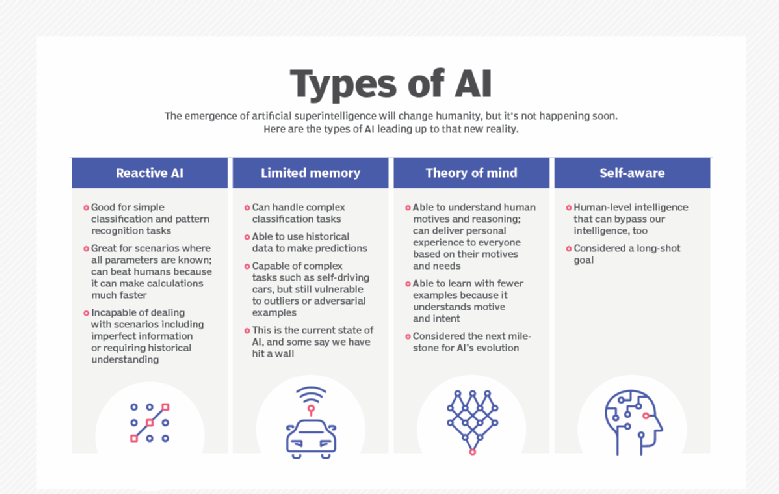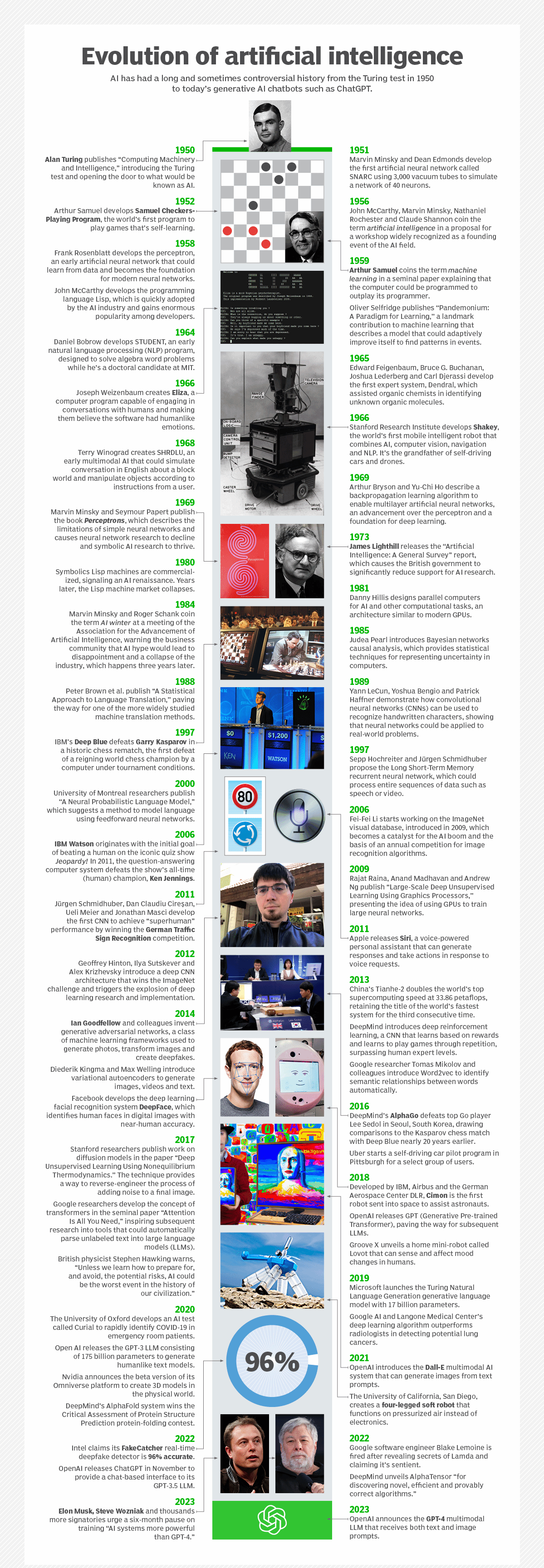In the ever-evolving landscape of technology, artificial intelligence (AI) has emerged as a transformative force that is reshaping diligence and the way we live and work. These cutting-edge technologies frequently used interchangeably but with distinct nuances, are fueling inventions that range from voice assistants like Siri to self-driving buses and predictive healthcare analytics. In this composition, we’ll delve into the world of artificial intelligence, demystifying its core principles, exploring its applications across different disciplines, and pondering its ethical considerations.
Before we dive deeper, let’s clarify the Basic explanations
Artificial Intelligence (AI), means making computer systems do things that typically need human intelligence. This includes solving problems, learning from experience, understanding human language, recognizing patterns, and making decisions to solve problems.

The Marriage of Data and Algorithms
At the heart of artificial intelligence lies data – vast amounts of it. AI thrives on data, using it to train models, identify patterns, and make predictions. In the era of big data, artificial intelligence capabilities have seen remarkable growth. To make this concept more understandable, let’s take a step back and explore a simplified example, just as if we were having a casual conversation.
Imagine you are managing an email system to filter out spam. Traditionally, you might create rules to flag emails containing certain keywords. But with artificial intelligence, you feed the system thousands of emails, marking each as spam or not spam. The artificial intelligence algorithm learns to identify patterns in the data, understanding what defines spam. Over time, it becomes very proficient at recognizing spam without needing explicit instructions. This ability to learn from data is a key feature of AI across industries.
Recommended Read: Online Safety: Cybersecurity Tips and Eye-Opening Facts
What are the 4 types of artificial intelligence?
- Type 1: Reactive machines. These AI systems have no memory and are task-specific. An example is Deep Blue, the IBM chess program that beat Garry Kasparov in the 1990s. Deep Blue can identify pieces on a chessboard and make predictions, but because it has no memory, it cannot use past experiences to inform future ones.
- Type 2: Limited memory. These AI systems have memory, so they can use past experiences to inform future decisions. Some of the decision-making functions in self-driving cars are designed this way.
- Type 3: Theory of mind. Theory of mind is a psychology term. When applied to AI, it means the system would have the social intelligence to understand emotions. This type of artificial intelligence will be able to infer human intentions and predict behaviour, a necessary skill for artificial intelligence systems to become integral members of human teams.
- Type 4: Self-awareness. In this category, AI systems have a sense of self, which gives them consciousness. Machines with self-awareness understand their own current state. This type of AI does not yet exist.

The versatility of AI is apparent in its wide-ranging applications across various industries. Let’s explore some compelling examples:
- Healthcare: AI-driven tools can analyze medical images like X-rays and MRIs with astounding precision, aiding in early disease detection. Predictive analytics help hospitals optimize resource allocation and manage patient inflow, while wearable devices monitor health, potentially saving lives.
- Finance: In the real-time financial sector, AI powers algorithmic trading, fraud detection, and credit risk assessment. Chatbots handle customer inquiries, and robo-advisors provide automated investment advice. artificial intelligence models predict market trends and risks, influencing investment decisions.
- Retail: Personalized recommendations on e-commerce platforms, similar to those by Amazon and Netflix, are powered by AI algorithms that analyze user behaviour and preferences. Inventory management, demand forecasting, and supply chain optimization benefit from artificial intelligence-driven insights.
- Transportation: Self-driving vehicles, an innovation, promise safer and more efficient transportation. AI algorithms help optimize traffic flow and plan energy-efficient routes for vehicles and artificial intelligence-driven logistics.
- Smart Manufacturing: Factories leverage AI and IoT (Internet of Things) technologies to enhance productivity. Predictive maintenance reduces downtime by identifying equipment issues before they lead to breakdowns.
- Education: Adaptive learning platforms use AI to tailor educational content to individual student needs, improving engagement and outcomes. Automated grading and feedback systems save educators time.
- Entertainment: Recommendation algorithms on streaming platforms enhance the user experience by suggesting content based on viewing history. AI-generated music and artwork push creative boundaries.
- Natural Language Processing (NLP): AI-powered chatbots and virtual assistants like Siri and Alexa understand and respond to human language, enabling voice-controlled interactions.
Strong AI vs. weak AI
AI can be categorized as weak or strong.
- Weak AI, also known as narrow AI, is designed and trained to complete a specific task. Industrial robots and virtual personal assistants, such as Apple’s Siri, use weak artificial intelligence.
- Strong AI, also known as artificial general intelligence (AGI), describes programming that can replicate the cognitive abilities of the human brain. When presented with an unfamiliar task, a strong artificial intelligence system can use fuzzy logic to apply knowledge from one domain to another and find a solution autonomously. In theory, a strong artificial intelligence program should be able to pass both a Turing test and the Chinese Room argument.
AI governance and regulations
Despite potential risks, there are currently few regulations governing the use of AI tools, and where laws do exist, they typically pertain to artificial intelligence indirectly. For example, as previously mentioned, U.S. Fair Lending regulations require financial institutions to explain credit decisions to potential customers. This limits the extent to which lenders can use deep learning algorithms, which by their nature are opaque and lack explaining ability.
GDPR and Consumer Data: A Glimpse into AI Regulation
The European Union’s General Data Protection Regulation (GDPR) is considering artificial intelligence regulations. GDPR’s strict limits on how enterprises can use consumer data already limit the training and functionality of many consumer-facing artificial intelligence applications.
Emerging AI Legislation: U.S. Policy Developments
Policymakers in the U.S. have yet to issue AI legislation, but that could change soon. A “Blueprint for an AI Bill of Rights” published in October 2022 by the White House Office of Science and Technology Policy (OSTP) guides businesses on how to implement ethical artificial intelligence systems. The U.S. Chamber of Commerce also called for artificial intelligence regulations in a report released in March 2023.
The Complex Task of Crafting AI Laws
Crafting laws to regulate artificial intelligence will not be easy, in part because artificial intelligence comprises a variety of technologies that companies use for different ends, and partly because regulations can come at the cost of AI progress and development. The rapid evolution of artificial intelligence technologies is another obstacle to forming meaningful regulation of artificial intelligence, as are the challenges presented by AI’s lack of transparency that make it difficult to see how the algorithms reach their results. Moreover, technological breakthroughs and novel applications such as ChatGPT and Dall-E can make existing laws instantly obsolete. And, of course, the laws that governments do manage to craft to regulate artificial intelligence don’t stop criminals from using the technology with malicious intent.

Challenges and Ethical Considerations
As AI becomes increasingly integrated into our lives, it raises important ethical questions. Then there are some crucial considerations
- Bias in Data: AI models can inherit biases present in their training data, potentially leading to discriminatory outcomes. Efforts are underway to mitigate these biases and ensure fairness.
- Privacy: The collection and analysis of vast amounts of personal data raises concerns about privacy. Striking a balance between data-driven insights and individual privacy is a complex challenge.
- Accountability: Determining responsibility when artificial intelligence systems make decisions is a legal and ethical dilemma. Should it lie with the developers, the users, or the algorithms themselves?
- Transparency: Many AI algorithms are considered “black boxes,” making it challenging to understand how they arrive at their decisions. Transparent AI is essential for building trust.
- Job Displacement: Automation driven by AI may lead to job displacement in certain industries. Preparing the workforce for these shifts is a societal challenge.
- Security: AI can be exploited for malicious purposes, such as deepfake videos and cyberattacks. Strengthening cybersecurity is paramount.
Conclusion
In conclusion, AI is revolutionizing the world, opening new frontiers in innovation and challenging our understanding of what’s possible. While it holds incredible potential for improving our lives, addressing the associated challenges is equally vital. Striking a balance between advancement and ethical responsibility will determine the trajectory of this transformative technology in shaping our future.
In this age of rapid technological advancement, staying informed about the latest developments and engaging in discussions about their implications is not just an option; it’s a responsibility that each of us shares in shaping the world of tomorrow.
Recommended Reading: Unlocking AI Secrets: Your Guide to Masterful Prompting






